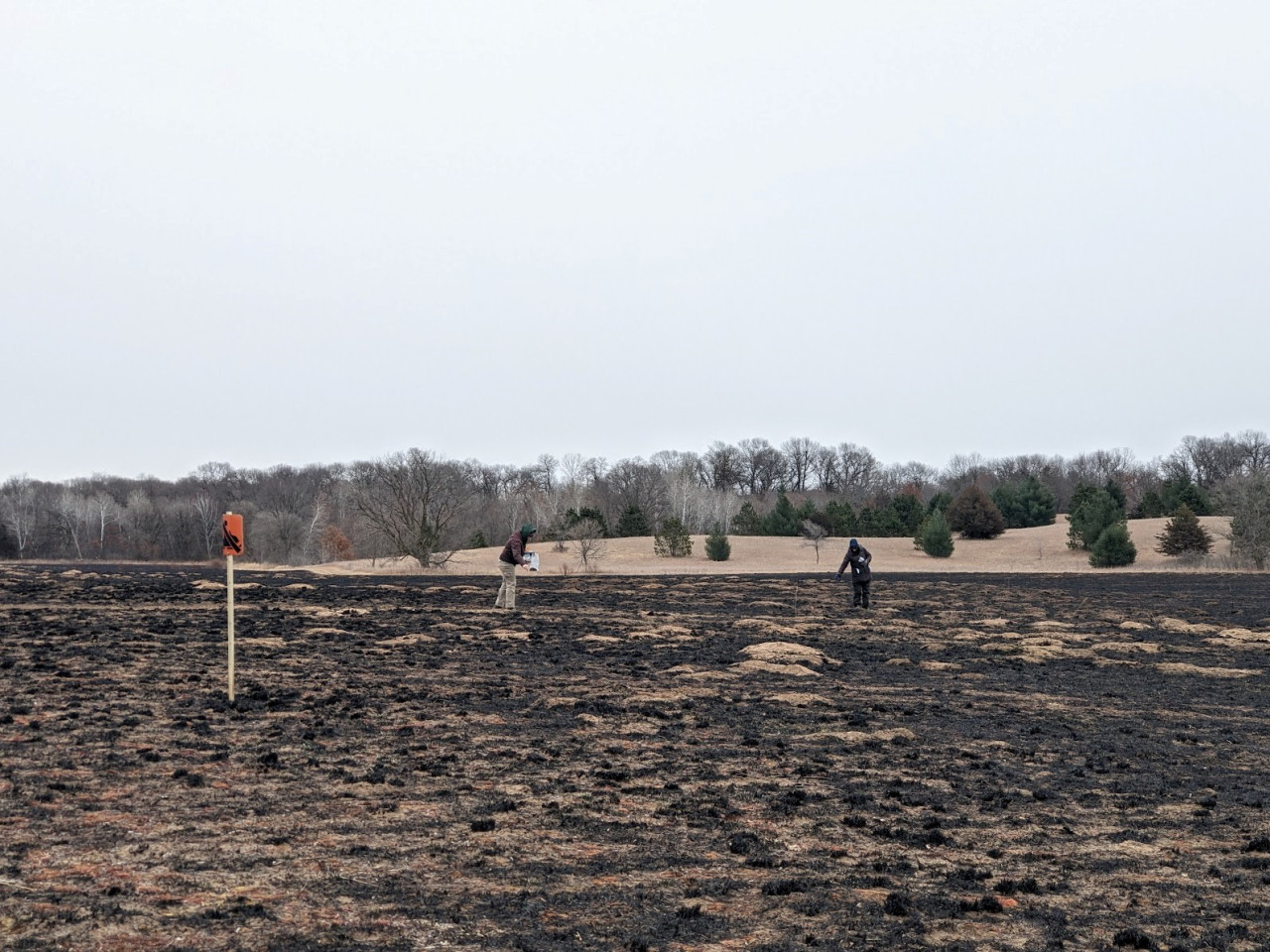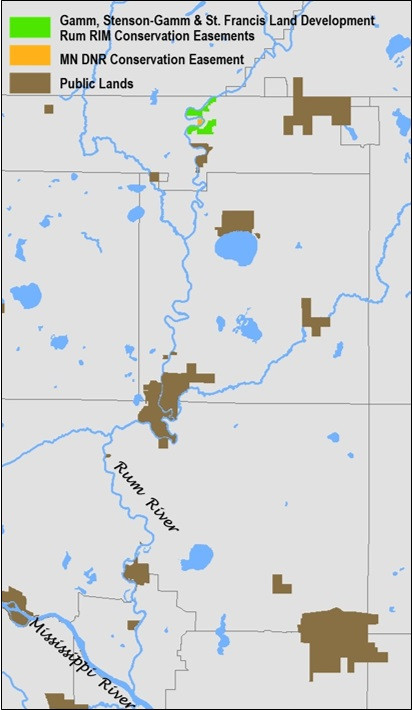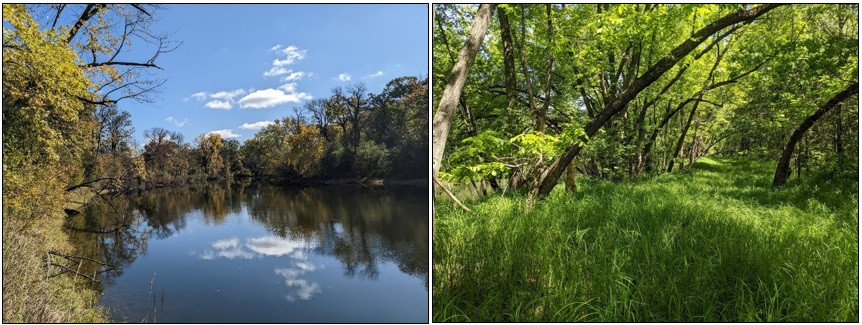ACD staff, volunteers and students are collecting data to record milkweed plants, flowering plants, Monarch caterpillars and Monarch butterflies in prairies throughout Anoka County. The data will be entered into a national database, which is utilized to understand how monarchs interact with the environment, and how habitat and monarch populations change over time. The data will also be used to guide management decisions at each prairie. ACD recently applied for BWSR pollinator grant funds, which would provide funding for future habitat enhancement activities with students in the Anoka-Ramsey Community College prairie and to broadcast milkweed and other wildflower seed after Anoka County Parks prescribed prairie burns. Sign up today to volunteer with ACD or for more information contact Carrie Taylor, Restoration Ecologist, at
In 2019, The Anoka Sand Plain (ASP) Rescue Program collected MN State Threatened Rotala ramosior (toothcup) seed from a site and the collected seed was taken to the MN Landscape Arboretum's seed bank for storage and preservation. The ASP Program is always on the search for suitable habitat and the Cedar Creek Ecosystem Science Reserve has habitat, active management and a willing landowner. Bison were introduced to part of the Reserve, creating open soil disturbance with their trails and wallows.
In fall, 2023, the ASP Rescue team spread a small amount of seed along and the area was recently monitored this spring and countless Rotala ramosior – toothcup plants were identified throughout the wetland depression. Toothcup is an annual whose population fluctuates due to changes in water levels along shorelines and wetland depression habitats and requires disturbance to create bare soil for the seeds to have space to germinate. The ASP Rescue team will continue to monitor this area to determine the results of the seeding, which will help guide future reintroduction and management efforts. For more information contact Carrie Taylor, Restoration Ecologist, at
ACD was recently awarded National Fish and Wildlife Foundation Monarch Butterfly and Pollinators Conservation Funds to increase habitat for the monarch butterfly and other pollinators. ACD is collaborating with Sherburne County Parks and Great River Greening to restore and enhance habitat and create pollinator corridors within the Anoka Sand Plain region. This funding will help support and expand state programs such as the Anoka Sand Plain Partnership and the BWSR Habitat Enhancement Landscape Program.
Sherburne County Parks will coordinate restoration and enhancement activities at Bdé Heḣáka, Omashkooz Zaaga'igaans Regional Park, a new park in coordination with Tribal Historic Preservation Officers from the Upper and Lower Sioux Community and Mille Lacs Band of Ojibwe to restore land through traditional cultural methods. Great River Greening will coordinate projects to enhance large habitat corridors in Sterns, Sherburne, Chisago, Wright, Anoka, Benton and Morrison counties. ACD will coordinate projects within Anoka County.
Unused lots, agriculture fields that are out of production and turf will be restored to create new habitat by planting native milkweed and wildflowers. Degraded lands that have little to no milkweed and forbs will be enhanced by controlling invasive species and conducting prescribed burns. ACD will be hosting events to plant, collect seed, and participate in a national Integrated Monarch Monitoring Program. Details on volunteer opportunities are coming soon! For more information contact Carrie Taylor, Restoration Ecologist, at
ACD has collaborated with BWSR's RIM program to establish conservation easements to permanently protect, restore, and manage natural resources on private lands. Land protection has many benefits including protecting water quality, habitat, creating conservation corridors, and supporting climate resiliency.
In 2023, two new conservation easements were established along the Rum River. They are adjacent to a conservation easement that was established in 2022 through the Rum RIM program and across the river from a DNR Conservation Easement. These conservation easements create a block of protected land totalling 183.5 acres along 10,960 feet of shoreline. The Gamm, Stenson-Gamm, St. Francis Land Development, and MN DNR Conservation Easement create an additional habitat core with functioning ecosystems and enhance habitat in the Rum River corridor.
For more information contact Carrie Taylor, Restoration Ecologist, at
The Anoka Sand Plain (ASP) Rare Plant Rescue Program had a busy year in 2023! Thanks to the assistance of partners and volunteers, we:
- Rescued over 900 state threatened and endangered plants from 3 new sites!
- Transplanted over 600 rescued plants and species from seed germination trials.
- Collected seed from 5 rare plant ASP populations for genetic preservation in the MN Landscape Arboretum's Rare Plant Seed Bank.
- Began stem cutting and/or germination experimentations on Gaylussacia baccata (Black Huckleberry) and Rubus sp. (Bristle-berries).
- Collaborated with the City of Blaine to adjust land management practices around a rare population of Endangered Aristida longespica (Slimspike Three-awn).
- Implemented follow-up monitoring of previous rescue transplants to calculate survival and record success rates of locations and methods.
Looking Forward:
- Plants rescued in 2023 are overwintering at the MN Landscape Arboretum and will be ready to move into their new homes in 2024.
- As habitat loss continues, we will continue to seek out and survey new suitable habitats for the rescued transplants.
- Research efforts will continue as we expand our knowledge about these rare species.
- Conservation plans are being developed for the rare species of the ASP, outlining methods and protocols for plant rescue and conservation.








